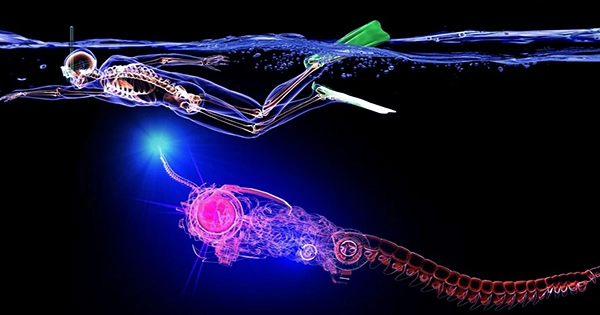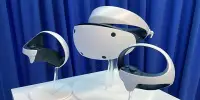Scientists at North Carolina State University have developed an energy-saving soft robot that has the ability to swim more than four times faster than previous swimming soft robots. They were inspired by the biomechanics of the manta ray.
The robots are referred to as “butterfly bots” because of the way they swim, which is similar to how a person’s arms typically move when swimming the butterfly stroke.
“To date, swimming soft robots have not been able to swim faster than one body length per second, but marine animals—such as manta rays—are able to swim much faster, and much more efficiently”.
Jie Yin, Study Corresponding Author and Associate Professor, Mechanical and Aerospace Engineering, North Carolina State University
“We wanted to investigate if we could construct faster, more energy-efficient soft robots,” Yin continued, “so we drew inspiration from the biomechanics of these creatures. The prototypes we’ve created function incredibly well.
The researchers created two different types of butterfly bots. One, in particular, was geared for speed and could reach average speeds of 3.74 body lengths per second. A second was created that was extremely maneuverable and had the ability to make sharp rotations to the right or left. This agile prototype was capable of 1.7 body lengths per second of speed.
Finding Chi, the paper’s first author, and a recent NC State graduate explained that scientists who study aerodynamics and biomechanics evaluate the energy efficiency of flying and swimming creatures using a concept known as a Strouhal number.
Chi said, “An animal flies or swims at its most efficient when its Strouhal number is between 0.2 and 0.4. Our butterfly bots have Strouhal numbers in this range on both of them.
The “bistable” wings of the butterfly robots, which hold two stable states, are what give them their swimming prowess. The wing is comparable to a snap hair clip, which is steady until users exert some energy (by twisting it). The hair clip changes shapes and becomes hard when the energy level reaches a certain point.
The butterfly bots have soft silicone bodies with bistable wings that are modeled after hair clips. By inflating the soft body’s chambers with air, users can control how quickly the wings transition between their two stable states. The body bends up and down as those chambers inflate and deflate, which forces the wings to move back and forth as well.
“Most previous attempts to develop flapping robots have focused on using motors to provide power directly to the wings. Our approach uses bistable wings that are passively driven by moving the central body. This is an important distinction, because it allows for a simplified design, which lowers the weight”.
Jie Yin, Study Corresponding Author and Associate Professor, Mechanical and Aerospace Engineering, North Carolina State University
The soft body, the faster butterfly bot’s single “drive unit,” controls both of its wings. As a result, turning left or right is difficult but highly quick. The nimble butterfly bot essentially has two driving units that are connected side by side. With this design, users can control both wings at once or so-called “flap” just one wing, allowing it to perform quick maneuvers.
“This work is an exciting proof of concept, but it has limitations. Most obviously, the current prototypes are tethered by slender tubing, which is what we use to pump air into the central bodies”. We’re currently working to develop an untethered, autonomous version.
Jie Yin, Study Corresponding Author and Associate Professor, Mechanical and Aerospace Engineering, North Carolina State University
Yaoye Hong, a candidate at NC State, Yao Zhao, and Yanbin Li, postdoctoral researchers there, also co-authored the work. The National Science Foundation provided funding for the project through grants CMMI-2005374 and CMMI-2126072.
















